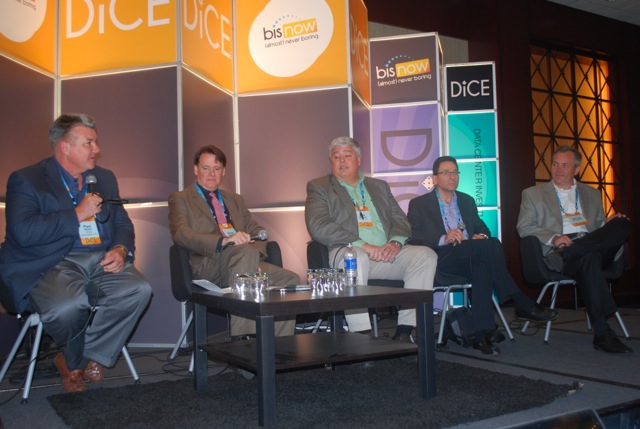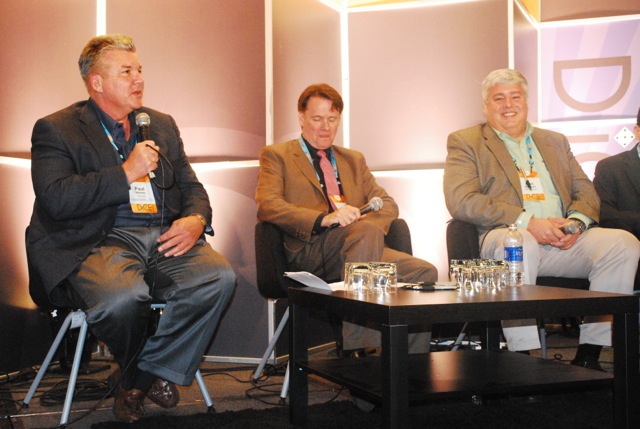Last week, CoreNet hosted the Eastern Regional Symposium (ERS), which is held each year for the benefit of Commercial Real Estate Executives. Paul Himes and Karen Fields from Himes Associates were main components to the Mid-Atlantic Chapter’s success. If you were not one of the 400+ attendees at the ERS, read on! It’s imperative to know what’s happening in your industry, and I’ve got the inside scoop. 
Held at The University of Pennsylvania for two days, the ERS is a centralized forum for Commercial Real Estate professionals to network and partake in break-out sessions where the most well-known figures in the industry discuss past experiences and future concerns.
This years overarching topic: Resource Strategies for Resilient Corporate Real Estate Portfolios. That’s quite a title. So, how was this arbitrary statement broken down for the ears of ERS’ 400+ attendees?
Himes Associates was intrinsically involved in three breakout sessions entitled:
- Contingency Planning
- The New Location Paradigm
- Building Better, Building Bolder
Relating these titles back to Resilient Corporate Real Estate Portfolios is starting to make sense now, right? Let’s take a closer look.
1. Contingency Planning: Hurricane Katrina, Hurricane Sandy, the Oklahoma Tornado; these are just a few natural disasters that have had devastating effects on the U.S. in recent history. Although these natural disasters are few and far between, they will only continue to worsen and adversely affect our industry.
Just as hurricane victims seek to build stronger homes in reaction to their devastation, CRE will undoubtedly be looking to make their business as resilient and long lasting as humanly possible.
Speaking of humans, contingency planning experts suggest that it is vital to create and implement a contingency plan in the case of an unforeseen event. Here’s how:
Top 10 Recommended Contracts To Have “In Place”
- Disaster cleanup and restoration services
- Plumbing services (including large pumps)
- Electrical services (manpower and equipment)
- Generator services
- HVAC services (A/C equipment and controls)
- Communications (radio, cell, Blackberry & phone)
- Food & accommodations (cots, showers, hotel rooms)
- Fuel oil supplies
- Demo Contractor
- Security services
Remaining resilient in the ever-changing environment of the twenty-first century takes more than a speedy emergency plan. Infrastructure must be not only look outstanding, but must also be innovative and therefore adaptive to the curve-balls, fastballs, and change-ups thrown by our economy and nature alike. So what do we do? We build better; we build bolder.
2. Building Better, Building Bolder: This discussion mirrors its title. It’s essential to recognize what buildings are developed, but also why they are built that way. The major construction of Capitol One’s Headquarters in Tyson’s Corner, VA was a big talking point. Capitol One is a major player in creating the Tyson’s culture.
If you’re not familiar with Tyson’s, it is a somewhat controversial location in Northern Virginia. It’s not Washington D.C. (really, it’s not), but it’s not Virginia. It’s NOVA, an accumulation of business and living. It’s sort of like a mini corporate Disney World where you can make and spend all of your money within a 3 mile radius. CRE is undoubtedly a driving factor behind the success of Tyson’s Corner.
Capital One’s Barry Mark said it best:
“The story of Capital One’s rezoning and new Headquarters building is a lesson on the importance of involvement and resiliency in the face of a changing urban planning environment. Those companies which actively engage with local government agencies and neighboring companies and citizens will be the beneficiaries of the changes that will be produced in that environment”
In other words, leaders like Capitol One built boldly, and will reap the benefits of their risk. They’re not only creating a building, they are creating a culture and environment that others are likely to follow. If you build it, they will come. To learn more about Capitol One and Tyson’s. Check out this article in The Washington Post.

Last but certainly not least was the discussion where Paul Himes Moderated.
3. The New Location Paradigm- The focus of this discussion was on “Mission Critical” Facilities, a large part of the work done by Himes Associates. A Mission Critical Facility is any facility that plays a critical role in delivering primary business activities. My biggest takeaway from the panel is that a Mission Critical facility requires acute attention, but is entirely dependent on the company’s industry. It wouldn’t make too much sense for Coca Cola to create their best contingency plan for a Data Center in Ashburn, right? These are all factors to take into consideration when choosing Mission Critical Facilities.
According to Jack Funchion from Digital Realty Trust, DLR owns over 122 data centers across 10 countries and 4 continents. The number will only continue to grow as businesses become more and more technologically dependent. The decision making process as to where to place these facilities should be strategic. Check out some more Digital Realty locations to get a better look.

- Mission Critical Factors to consider in location strategy
- A strong contingency plan is critical for each mission critical location
- Elements of the contingency plan will vary significantly based on type
- Third party providers can play a critical role in viable contingency plans
- Recommended Steps
- Ensure you have consensus around which are your mission critical facilities
- Take the lead in forming a cross functional team to vet contingency plans
- Set up a process to review contingency plans on a regular basis
- Avoid complacency with regard to mission critical facilities
And so we come full circle. Employing all three of these strategies in tandem is the key to becoming an industry professional like Paul Himes, Matt Fanoe, Jack Funchion, or Dan Radilla. Consider your options, be thoughtful in your decision-making, and be bold!
It’s easy to get caught up in the monotony of your daily work. Don’t forget to take a look at the big picture of your industry. Whether you’re the CEO of a brokerage firm, or a Sales Rep for a battery company, it is imperative to be able to understand, better yet, predict the climate of your industry, or lets face it — you’ll end up left in the cold.









You must be logged in to post a comment.